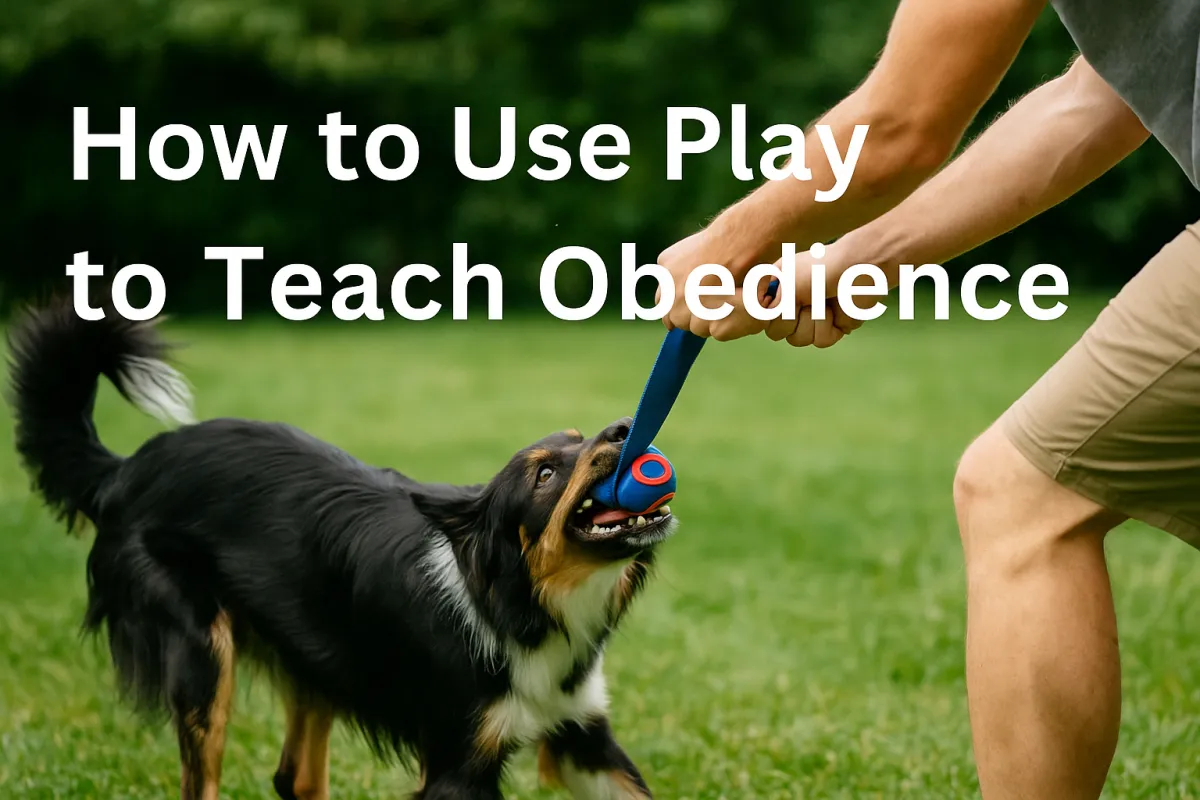
Using Play to Teach Obedience
🎯 How to Use Play to Teach Obedience
Because training through joy gets deeper results than training through pressure.
If you’ve ever asked:
“How do I get my dog to listen without bribing them or yelling?”
You’re in the right place.
Obedience that sticks doesn’t come from control.
It comes from clarity, rhythm, and relationship.
And the best way to build all three?
👉 Play.
Here’s how to flip the script and start using play to build real obedience:
🧠 Step 1: Understand What Obedience Really Is
Obedience isn’t about dominance or forced compliance.
It’s about a dog:
Understanding what’s being asked
Wanting to do it
Being able to regulate their emotions in that moment
Play gives us a way to rehearse all three, without tension or shutdown.
🎾 Step 2: Pick Your Game — Tug or Fetch
Your play session becomes your training session.
Each game can teach core obedience concepts:
Tug teaches:
Engagement
Clean outs and impulse control
Response to cues under arousal
Fetch teaches:
Recall
Object delivery
Windowed freedom and focus
The key isn’t the game—it’s the structure inside the game.
🔁 Step 3: Build the Rhythm Inside the Game
This is where the real obedience foundation is built. Use cues like:
“Ready?” → Opens the play window (cue for focus)
“Out” or “Drop” → Teaches release on cue (impulse control)
“Free!” → Encourages drive and choice (confidence builder)
“Done” → Signals the end of a session or behavior window (closure and clarity)
Each cue has meaning.
Each moment reinforces that your words matter—even in high energy.
🐾 Step 4: Layer In Real-Life Behaviors
Once your dog is tuned in through play, it’s time to use that rhythm in the real world:
Use tug drive to build a strong “Heel” — reward position with engagement
Use fetch returns to build recall — if they return with the toy, they’ll return without one
Use play breaks in between reps of place, sit-stay, or leash work to keep momentum and buy-in high
💡 Pro tip: When play is the reward, obedience becomes part of the fun.
🔄 Step 5: End Strong, Always
End before your dog checks out—not after.
Wrap with a clear “Done,” a calm reset, and a leash-up that doesn’t feel like punishment.
Why?
Because ending on a high note builds anticipation, drive, and a dog who can’t wait to train again.
🎤 Final Word:
If your obedience training feels like a chore—for you or your dog—it’s not going to last.
But if it feels like a game?
You’ll both show up ready to work, every time.
At RDT, we train through play not because it’s easier—
but because it creates results that actually hold up in real life.
🐶 Want to Learn How to Train This Way?
Inside the RDT Lifestyle Community, we teach the full Play Obedience System, including:
Live coaching and demo breakdowns
Tug & Fetch flow libraries
Obedience through windows and rhythm
Structured challenges that build real-world skills
🎁 Join us here → [https://revolutionaryk9.life/community-info]
Because obedience built through play?
That’s obedience your dog chooses to follow.
